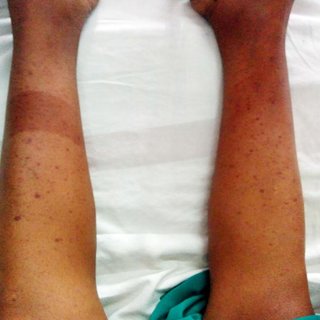Posttransfusion purpura (PTP) is a rare but potentially life-threatening transfusion reaction characterized by severe thrombocytopenia occurring 5 to 10 days after a transfusion of blood products. This alloimmune disorder predominantly affects previously sensitized individuals and is most commonly associated with antibodies against human platelet antigen-1a (HPA-1a). The sudden and profound drop in platelet count places patients at significant risk for spontaneous bleeding and requires prompt recognition and targeted therapy.

Pathophysiology of Alloimmune Thrombocytopenia in PTP
Immune Mechanisms Involved
PTP occurs when a recipient develops alloantibodies, typically anti-HPA-1a, against transfused platelet antigens that are absent in the recipient’s own platelet surface. The immune response leads to destruction not only of donor platelets but also of autologous platelets, due to a poorly understood mechanism possibly involving immune complex formation or epitope spreading.
Most Common Antigen Involved: HPA-1a
Approximately 90% of PTP cases involve antibodies directed against HPA-1a. The condition predominantly affects HPA-1a-negative individuals, most frequently multiparous women who became sensitized during pregnancy or earlier transfusion episodes.
Epidemiology and Risk Factors
PTP is a rare condition with an estimated incidence of 1 in 50,000 to 100,000 transfusions. The majority of cases occur in:
- Multiparous women, particularly those homozygous for HPA-1b
- Individuals with a history of transfusions
- Patients lacking common platelet antigens (e.g., HPA-1a negative)
The female-to-male ratio is approximately 20:1, and most affected individuals are over the age of 50.
Clinical Presentation and Signs
PTP typically presents 5 to 10 days post-transfusion. Key clinical features include:
- Sudden, severe thrombocytopenia (platelet count often <10,000/µL)
- Petechiae and ecchymoses
- Mucosal bleeding (e.g., epistaxis, gingival bleeding)
- Hematuria or gastrointestinal hemorrhage
- Intracranial hemorrhage in extreme cases
The abrupt onset of symptoms in a previously stable patient post-transfusion is a key diagnostic clue.
Diagnostic Evaluation
Laboratory Findings
- CBC: Profound isolated thrombocytopenia with normal WBC and RBC counts
- Peripheral smear: May reveal reduced platelets; otherwise unremarkable
- Coagulation studies: Normal PT, aPTT, and fibrinogen (differentiates from DIC)
Serological Testing
- Platelet antibody testing: Detection of anti-HPA-1a using ELISA or MAIPA (monoclonal antibody-specific immobilization of platelet antigens)
- HPA genotyping: Confirms absence of specific platelet antigens in the patient
- Direct platelet immunofluorescence: May aid in confirming antibody-mediated destruction
Differential Diagnosis
The differential diagnosis for thrombocytopenia post-transfusion includes:
- Immune thrombocytopenic purpura (ITP)
- Drug-induced thrombocytopenia
- Disseminated intravascular coagulation (DIC)
- Thrombotic thrombocytopenic purpura (TTP)
- Sepsis-associated thrombocytopenia
Clinical history, timing of symptom onset, and serological testing help differentiate PTP from other causes.
Treatment and Management of Posttransfusion Purpura
First-Line Treatment: Intravenous Immunoglobulin (IVIG)
- Dose: 1 g/kg/day for 2 consecutive days
- IVIG is the treatment of choice and typically leads to platelet recovery within 2–5 days.
- It works by modulating Fc receptors and reducing antibody-mediated destruction.
Adjunctive Therapies
- Corticosteroids (e.g., methylprednisolone): May be used to suppress immune response
- Plasma exchange: In refractory or life-threatening cases to remove circulating antibodies
- Platelet transfusion: Generally ineffective unless antigen-negative platelets are used
Monitoring
- Daily platelet counts until resolution
- Monitoring for bleeding signs including neurologic assessments
- Repeat antibody screening in recurrent or persistent cases
Prevention of Recurrent PTP
Avoid Re-Exposure to HPA-1a Antigen
Patients with a history of PTP should:
- Wear medical alert identification
- Have their HPA genotype documented
- Receive only HPA-compatible (antigen-negative) blood components in future transfusions
Platelet Antigen Typing of Donors and Recipients
In select high-risk populations, screening for HPA compatibility may be considered, especially in multiparous women with a history of thrombocytopenia post-transfusion.
Prognosis and Outcomes
When promptly diagnosed and treated with IVIG, the prognosis of PTP is excellent, with most patients experiencing complete platelet recovery within 1–2 weeks. However, unrecognized or untreated cases carry a risk of life-threatening bleeding. Recurrence with subsequent transfusions is possible and must be anticipated.
Frequently Asked Questions:
What causes posttransfusion purpura?
PTP is caused by an immune response to foreign platelet antigens, usually HPA-1a, introduced during transfusion in a previously sensitized individual.
How soon after a transfusion does PTP appear?
Symptoms typically begin 5 to 10 days after the transfusion, corresponding to the development of a secondary immune response.
Is PTP treatable?
Yes, PTP is highly responsive to IVIG therapy, which restores platelet counts within days in most cases.
Can PTP happen more than once?
Yes, patients remain sensitized and may develop PTP again if re-exposed to the same antigen unless compatible blood products are used.
Is platelet transfusion useful in PTP?
Standard platelet transfusions are usually ineffective due to continued antibody-mediated destruction unless HPA-compatible platelets are used.
Posttransfusion purpura is a rare but critical diagnosis in patients presenting with severe thrombocytopenia following transfusion. Accurate recognition, timely diagnostic workup, and prompt IVIG administration are central to effective management. Prevention through detailed transfusion records, antigen typing, and the use of HPA-compatible blood products remains the cornerstone in avoiding recurrence and ensuring patient safety.